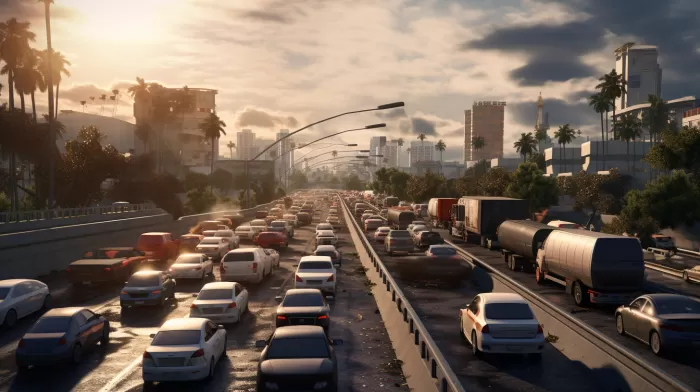Living near a busy road has long been associated with numerous health issues, ranging from an increased risk of asthma to hampering the healthy lung development of children. Moreover, for those who have already suffered a heart attack, exceptional care needs to be taken, as close proximity to a highway has been linked to higher mortality rates.
Beth Israel Deaconess Medical Center Research
The Boston-based Beth Israel Deaconess Medical Center conducted a study which revealed that heart attack survivors residing within 100 yards of a busy road have a 27% higher risk of death within ten years compared to those living at least 1,000 yards away. The research findings highlight that living close to a highway is directly associated with cardiovascular issues amongst those already dealing with heart problems.
Possible Mechanisms and Factors
There are several factors that could contribute to the detrimental health effects experienced by those living near highways. The most obvious one is air pollution, which is notably higher in and around busy roads. Air pollution comprises tiny particles and harmful gases such as nitrogen dioxide and ground-level ozone. These irritants not only damage the lungs, but also have the potential to cause severe heart issues.
Another critical factor is noise pollution. Excess noise can lead to heightened blood pressure and stress levels, both of which can further harm an already strained cardiovascular system. Noise disturbs sleep patterns, and the ensuing sleep deprivation can be linked to numerous health problems. It is essential to consider combined exposure to both air and noise pollution, as the effects could exacerbate health conditions more than the individual factors.
Negative Impacts on Cardiac Health
Heart attacks occur when blood flow to the heart is blocked, typically by a blood clot. This interruption can cause severe damage to or even destroy part of the heart muscle. A post-heart attack patient’s risk of death significantly increases if they live in proximity to areas with increased air and noise pollution, such as busy roadways. Regular exposure to these harmful pollutants might not only prolong recovery but also contribute to worsening health.
Effects on Respiratory Systems
As alarming as the risks associated with heart issues are, respiratory health problems are the most common side effect of living near a busy road. The Environmental Health Perspectives journal published a study showing that people living within 1,000 feet of a busy road are 50% more likely to develop lung cancer. Asthma, bronchitis, and emphysema are other respiratory illnesses that are more common in people living near highways. The effects on children can be even direr, as research indicates that there is a significant stunting of lung development in children who grow up in this environment.
Protecting Yourself and Your Family
While it’s not feasible for everybody to avoid living close to a busy road, there are measures you can take to mitigate the harmful effects:
- Keep windows facing the road closed and use double glazing to minimize noise pollution
- Use air filters to remove particulates and improve indoor air quality
- Choose apartments above the ground floor to reduce exposure to air pollution from traffic
- Plant trees in front of your home to act as a natural barrier against pollutants
- Exercise indoors or choose green spaces away from busy roads for outdoor activities
- Encourage the adoption of traffic regulations and sustainable public transport systems in your community
Conclusion
It’s crucial to be aware of the health risks involved in living close to a busy road, especially if you have a history of heart problems or already suffer from respiratory issues. If moving away from a busy road is not an option, take steps to minimize the potential health effects by limiting your exposure to pollutants, investing in air filters, and engaging in recreational activities away from busy roads. Additionally, work collaboratively with your community to find sustainable solutions to improve traffic management and public transportation systems, helping everyone reduce their exposure to harmful pollutants.



